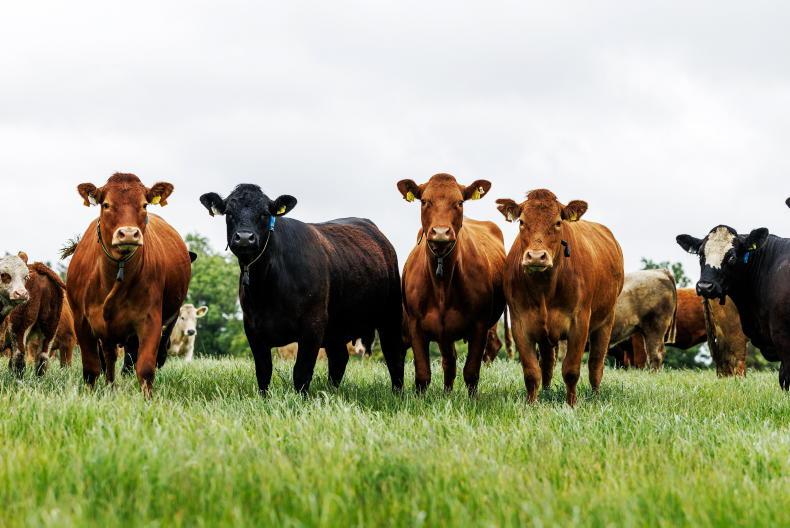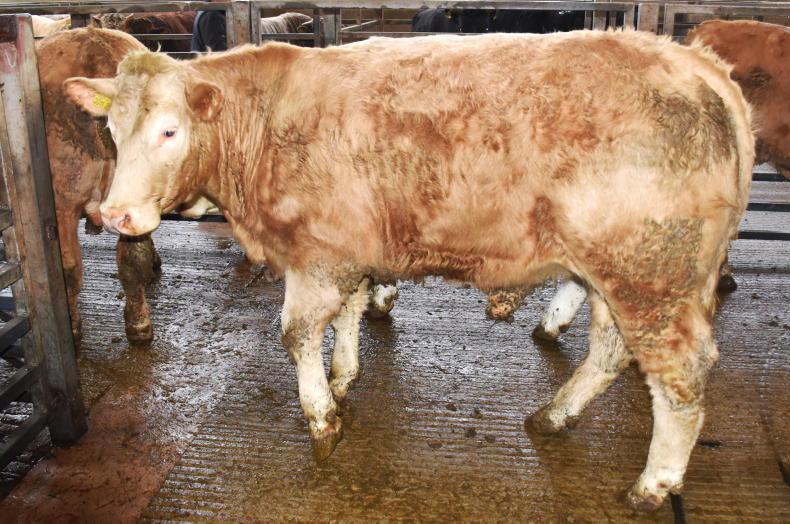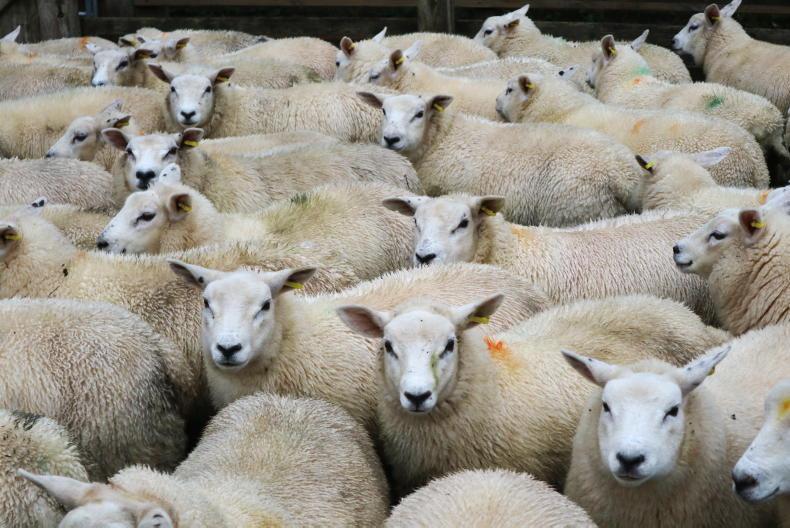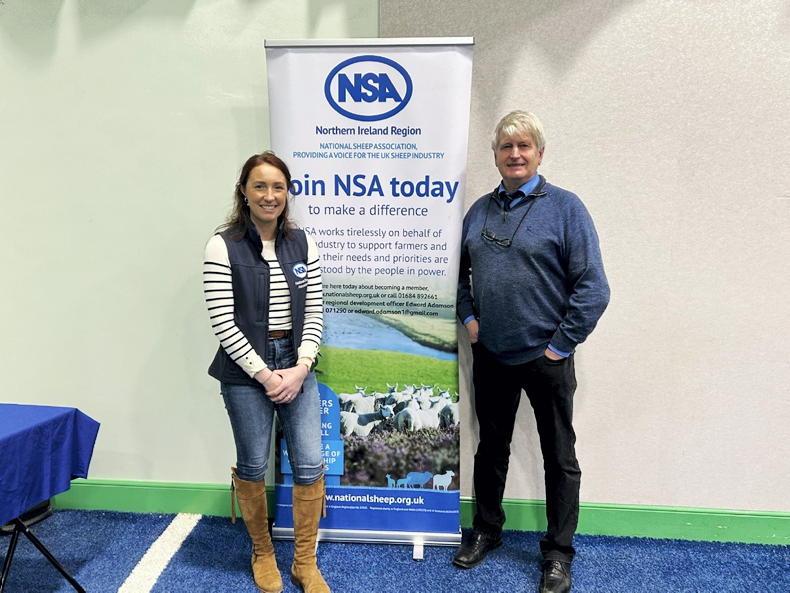The layout of a new sheep shed should be planned on paper before it’s built. However the layout of existing sheep sheds should be reviewed each year before the winter housing period. Consider the layout of pens, penning, passageways, meal and water troughs, individual pens, lambing equipment, handling equipment, ventilation and lighting. Keep in mind the needs of both sheep and shepherd. There is always room to improve.
A Teagasc survey carried out in 2000 on labour use on 30 sheep farms with an average flock size of 352 ewes showed that labour input was 36% higher on farms that had poor sheep housing when compared to those with good housing. The key message from this survey is the same today as it was 18 years ago; good housing means less work. List all the jobs you will do in your sheep shed. Jobs like feeding fodder, feeding meal, bedding, moving new-borns, mothering-up, watering, cleaning out and veterinary tasks and look at how these can be improved.
Shed design
A well designed sheep shed should allow you to feed fodder and meal to 100 ewes in 10-15 minutes. It should be possible to meal feed ewes without having to get into the pen with them. Having all your ewes under one roof or at least in the same yard will reduce the workload.
In some sheep sheds group pens are under-stocked due to limited meal trough space. If deep pens are to be stocked to their full potential based on the floor space requirements (Table 2 and Table 3), then walk-through troughs or feeding on two or more sides of the pen may be needed. Some sheds are under-stocked because meal feeding space is halved by having a walled side on the external boundary. This limits meal feeding to the front of the pen.
Having small group sizes makes more work as more groups have to be handled. It also reduces the number of ewes that can be housed in a shed as more space is given over to extra passageways. Small group sizes also increase the cost of housing as extra dividing gates, exit gates, water troughs and passageways are needed. Group sizes up to 60-80 ewes are fine where sheep are evenly matched and have correct floor, meal and fodder trough space as shown in Tables 1, 2 and 3. Those building a new sheep shed under TAMS II should have no more than 60 ewes/pen as per DAFM specification S146.



Bedding pens
The amount of straw used and the amount of time spent bedding can be reduced by feeding drier fodder, offering an all-meal diet or using slats. However these options are not available to all. The amount of time spent bedding can be reduced by having longer pens with fewer divisions between them. Table 4 shows the straw required to absorb urine produced by the average ewe. Minimise the number of obstacles within the pen. Locate water troughs and where possible, feed meals and fodder along the outside of the pen. Another option is to have properly hinged gates as pen divisions for easy opening and closing.
Design the sheep shed so that a tractor can enter straight into the group pens from both gable ends for easy cleaning out. Where practical, reduce the time spent cleaning out by having longer pens, fewer divisions between pens, avoiding locating obstacles like racks, ring feeders, walk through troughs and water troughs centrally in the pen. Posts should slot into the concrete floor so that they can be lifted out for cleaning. Alternatively pen divisions should be hinged so they can be swung out of the way without having to be completely removed.
To avoid soiling, water troughs in group pens should be 600mm above floor level. A block on the floor may improve access.

Each group pen should have a properly hinged small gate (0.9-1m wide) that opens freely for taking out newly lambed ewes. The bottom board of this small gate should open along with the gate to make it easier to encourage a ewe out of the pen.
In a straw-bedded house the passageway floor should be 150-200mm higher than the pen floor so that ewes can still reach feed on the passageway floor despite bedding building-up underneath them. This will reduce the frequency of cleaning out. However the downside of a raised passageway is that the tractor cannot enter the group pens via the passageway due to this drop.
The sheds main passageways should be located and designed so that a tractor can enter from one end and exit through the other end without having to reverse (see Table 5).
Individual pens
Locate individual pens to one side or toward the entrance of the sheep shed so they are handy to use but never in the way. Three things will make moving lambed ewes easy for one person. Firstly individual pens should be under the same roof as the group pens, secondly individual pens should be near group pens and thirdly the route from the group pens to the individual pens must be enclosed to prevent the escape of retreating mothers.
Allow one individual pen per six ewes, particularly where lambing is compact. Individual pens should be 1.5m x 1.5m. They should be made up using steel hurdles which are easier to keep clean, assemble and open. This area must have good lighting and a roof high enough to allow tractor access. Pens should be in rows which would allow dividing gates to be opened and bedding pushed into a passageway for a tractor loader or scraper to remove. The passageway between the rows of individual pens needs to be wide enough for two people to pass.
Good natural lighting is important for safety and animal health. The minimum number of clear sheets recommended on each roof slope or single-sided house; up to a span of 4.2m is one, up to 7.5m is two and up to 9.9m is three. Where spaced sheeting is used for the entire roof clear sheets can be omitted. A safety grid should be installed under each clear sheet. There should be at least 70 lux level of lighting.
Lameness
Less lameness means less labour. Before housing, pick out lame ewes and leave them in a field or a pen near the handling unit and footbath three times at five day intervals. Footbath other housed ewes every four weeks. Lameness will be an even bigger problem this year where silage is wet. Regular footbathing, extra straw and liming will reduce the number of lame ewes. Teagasc research on Wicklow farms found 5.2% lameness in limed pens compared to 12.8% in un-limed pens. Spread 25kg hydrated lime/100 ewes/week. A 1t bulk bag of hydrated lime costs about €165. For a 100 day winter that’s 60 cent per ewe. Compared this to 1t in small bags (40 bags X 25kg) costing €250/tonne. For 100 days that’s 90 cent per ewe.
Handling unit
A roofed handling unit attached to the sheep shed may sound like a luxury. However the growing numbers that do roof their handling unit find that it has clear advantages. Locating the roofed handling unit next to the sheep shed may reduce building cost by grafting onto existing stanchions. Penning costs can be reduced and ewes kept dry by using the existing housing as collection pens. A handling unit next to the sheep shed allows the timely completion of jobs like footbathing, vaccination, condition scoring and sorting of winter-housed pregnant ewes under one roof no matter the weather. Only roof essential parts of the unit such as the footbath, forcing pen, drafting race and dosing race. Having a group footbath is critical to lameness control. A 200-ewe flock needs a bath that holds 25 ewes and would need to be 4m x 2.5m.
Putting your hands into cold water on a cold day isn’t nice and can be avoided. Having a ready supply of hot water is a great encouragement to keeping hands, lambing ropes and other equipment clean. A mains-fed 10 litre over-sink water heater can be bought for as little as €100.
Keep the shed layout simple and keep changes simple. Have a plan for making improvements in stages. Prioritise what is important and affordable for you. But get the basic skeleton of the shed right from the start including the overall house layout, feed space, floor space, penning, water, ventilation, lighting and safety. From there improve in stages. Minimise work and maximise comfort for handlers. An airy shed that gives the best use of space is vital to shed design.


















SHARING OPTIONS